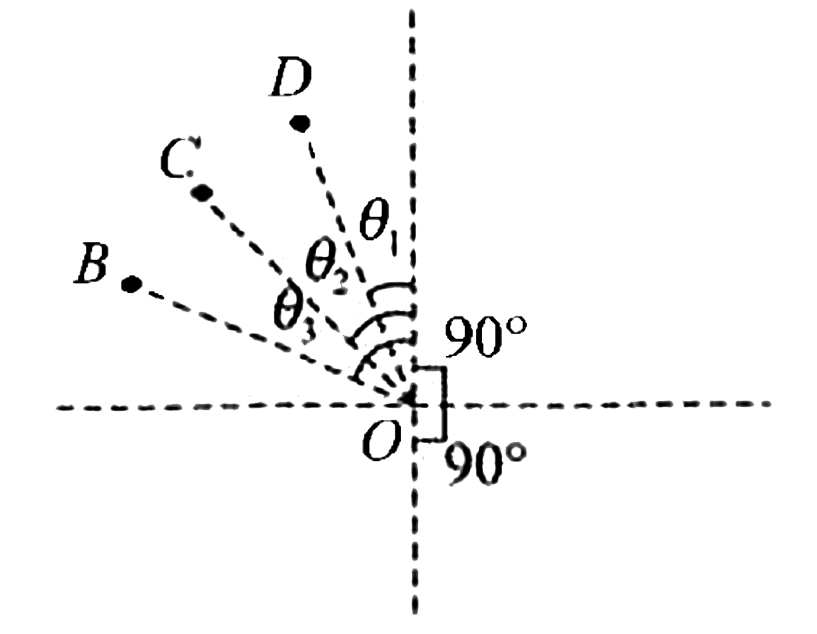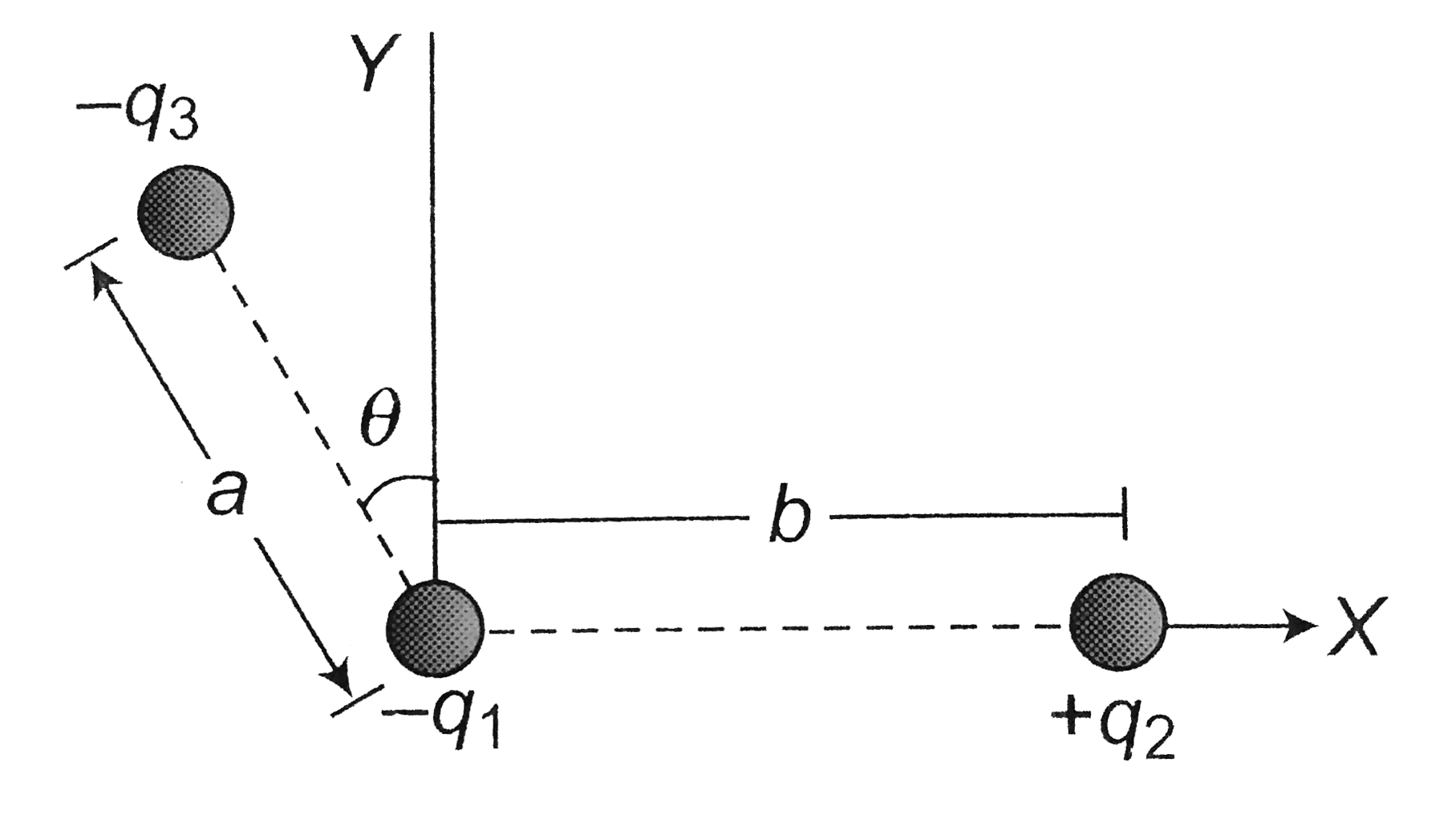Single Correct Answer Type from CENGAGE PHYSICS (ENGLISH) Chapter 11:COULOMB LAW AND ELECTRIC FIELD for Class 12
| Class 12 | PHYSICS |
| Chapter | COULOMB LAW AND ELECTRIC FIELD |
| CENGAGE PHYSICS (ENGLISH) | Single Correct Answer Type |
| Medium | English |
| Academic Year | 2023-2024 |
Question 1
Two positive point charges each of magnitude 10C are fixed at positions A &B at a seperation 2d=6m. A negatively charged particle of mass m=90gm and charge of magnitude 10×10−6C is revolving in a circular path of radius 4m in the plane perpendicular to the line AB and bisecting the line AB. Neglect the effect of gravity. Find the angular velocity of the particle
 View Solution
View SolutionQuestion 2
Four point positive charges are held at the vertices of a square in a horizontal plane. Their masses are 1kg,2kg,3kg,&4kg. Another point positive charge of mass 10kg is kept on the axis of the sqaure. The weight of their fifth charge is balanced by the electrostatic force due to those four charges. If the four charge on the vertices are released such that they can freely move in any direction(vertical, horizontal etc.) then the acceleration of the centres of mass of the four charges immediately after the release is (Use g=10m/s2)View SolutionQuestion 5
Two small spherical balls each carrying a charge Q=10μC are suspended by two insulating threads of equal lengths 1cm each, from a point fixed in the ceiling. It is found that in equilibrium threads are sepreated by an angle 60∘ between them, as shown in figure. What is the tension in the threads
(Given 14πε0=9×109Nm/C2 )
 View Solution
View SolutionQuestion 10
Two small spheres of masses M1 and M2 are suspended by weightless insulating threads of lengths L1 and L2. The spheres carry charges Q1 and Q2, respectively. The spheres are suspended such that they are in level with one another and the threads are inclined to the vertical at angle of θ1 and θ2 as shown. Which one of the following conditions is essential, if θ1=θ2?
 View Solution
View SolutionQuestion 11
Two identical small balls each have a mass m and charge q. When placed in a hemispherical bowl of radius R with frictionless, nonconductive walls, the bead move, and at equilibrium the line joining the balls is horizontal and the distance between them is R (see figure). Neglect any induced charge on the hemispherical bowl. Then the charge on each bead is : (here K=14πε0)
 View Solution
View SolutionQuestion 13
Four similar (+q) are placed at origin O, B, C and D as shown. The angles are as shown. Charges at B, C and D are equidistant from O at a distance of a. The forces of repulsion experienced by charge at O due to charges at B and D along CO are equal, given by q2√38πε0a2. Find the relation between θ1,θ2 and θ3:
 View Solution
View Solution





